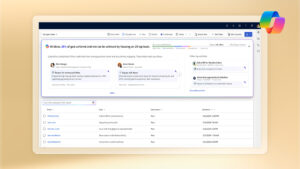
How predictable is your sales forecast?
Sales forecasts are wrong more than half the time, according to CSO Insights. That’s just slightly worse than a 10-day weather prediction!
It turns out that sales forecasting in practice is less science and more guesswork, depending heavily on gut feel and spreadsheets for most organizations. The process is prone to bias and error and usually not robust enough to take into account all the factors that might impact sales. As a result, sales forecasts all too often miss the mark.
Inaccurate sales forecasts not only hinder planning, budgeting, and territory alignment but also erode sales performance and investor confidence. To avoid these problems, more sales organizations are turning to automation and artificial intelligence (AI) to increase forecasting accuracy.
Obstacles to accurate forecasting
While optimism is a great motivator, it’s the bane of forecasting, resulting in overinflated numbers. On the other end of the spectrum, some sellers sandbag, intentionally entering overly conservative forecasts that they can then easily beat. Then there’s fear, even when sellers don’t have enough quality deals in the pipeline, they continue to rely on low-quality deals in their forecasts to avoid scrutiny. Meanwhile, sales managers, overburdened and under-supported, don’t investigate the commitments their sellers are making.
Besides human nature, there are many structural barriers that pose obstacles to accurate forecasts. For example, information is incomplete, forecasts tend to look backwards, and there’s a lack of intuitive tools.
Forecasting best practices
When evaluating your own forecasting processes, here are some best practices to consider:
- Streamline and automate: An integrated process leads to more accurate forecasts by ensuring your data flows seamlessly from one step to the next. Manually copy and pasting information between tools isn’t just time-consuming and tedious, it’s also error-prone. In addition, automation enables your organization to scale and better control sensitive sales data.
- Anticipate adjustments: Market, business, and competitive influences are always evolving, so your sales managers need real-time visibility and the ability to quickly adjust the forecast to reflect trends.
- Do reality checks: Intuition has always played a role, but it leads to sales forecasting mistakes. Incorporating built-in AI to augment seller-generated forecasts ensure a more objective and reliable forecast.
- Augment pipeline data: The typical forecasting process tracks deals using linear stages that may not accurately reflect deal progress, especially in longer, complex deals. Instead, organizations should incorporate a customer’s actual journey including emails, calls, meetings, and content downloaded to better predict the likelihood of purchasing and focusing seller energy on the best deals. Here again, AI plays a critical role in harnessing large volumes of data such as account and pipeline data as well as historical performance to gauge deal progress and drive pipeline insights.
Like the weather forecast, it’s not possible to predict sales accurately all the time. But there’s certainly room for improvement.
The new forecasting capabilities of Dynamics 365 Sales and Sales Insights can help. Our new forecasting capabilities enable organizations to accurately predict sales using prebuilt intelligence and automation.
- Predictive forecasting: Organizations can use built-in AI to objectively predict revenue and complement sales forecasts submitted by sellers. AI-generated predictions not only take into account signals and data from the current sales pipeline but also factor in historical performance to reflect the reality of the customer journey.
- Pipeline intelligence: Sales managers can track changes in the pipeline with snapshots and deal flow visualization. With snapshotting, managers can freeze the forecast data at a moment in time, to perform analysis and drive accountability. The deal flow visualization provides an intuitive approach for identifying how the pipeline has changed between snapshots, allowing managers to drill into the exact deals that have contributed to the increase or decrease in forecast commitment.
- Standard forecasting: Sales teams can streamline and automate the often time-consuming forecasting process. Organizations can natively create and manage bottom-up sales forecasts, including customizing the forecast models, adjusting the forecast, and unifying forecasting with pipeline management.
Visit the Dynamics 365 Sales webpage for more information on how the new forecasting capabilities in Dynamics 365 can transform your organization’s sales forecasting. Sign up for a free trial of Dynamics 365 Sales. For an in-depth overview of these capabilities please read this blog post.




